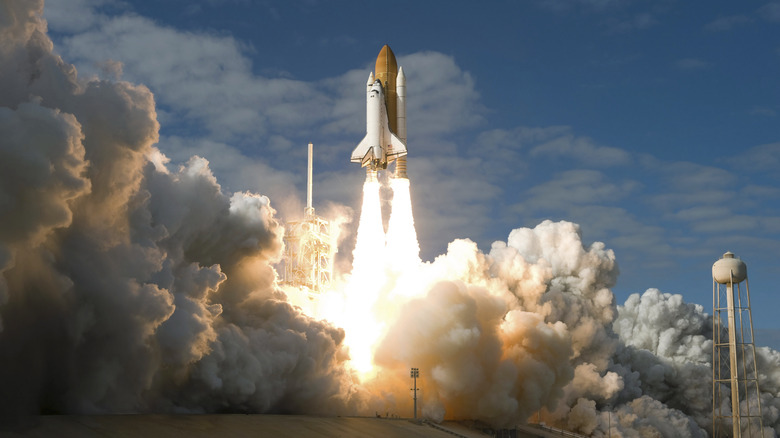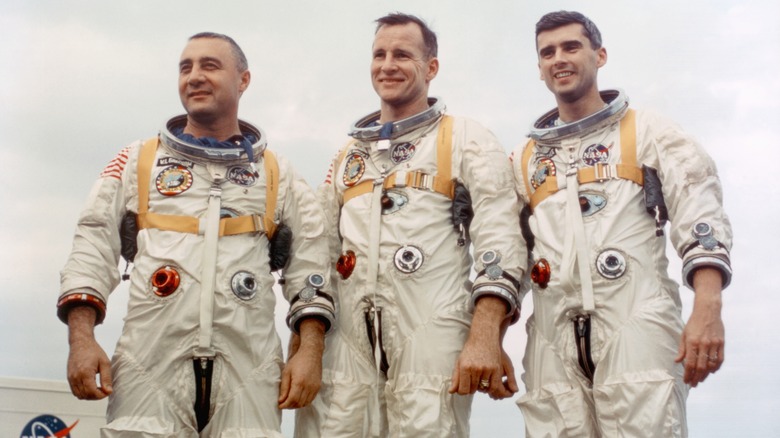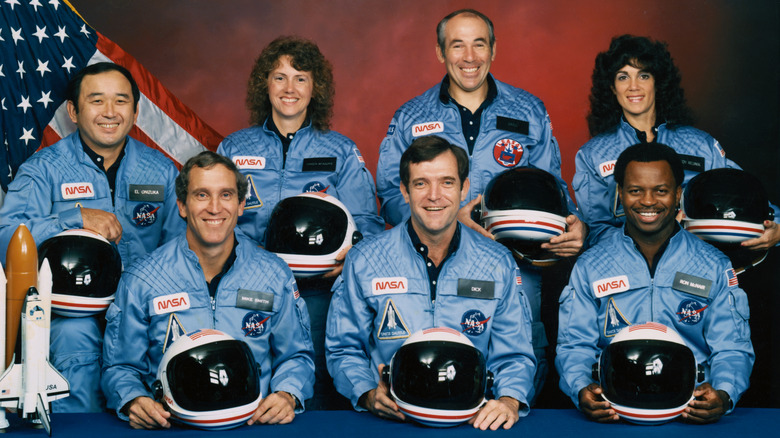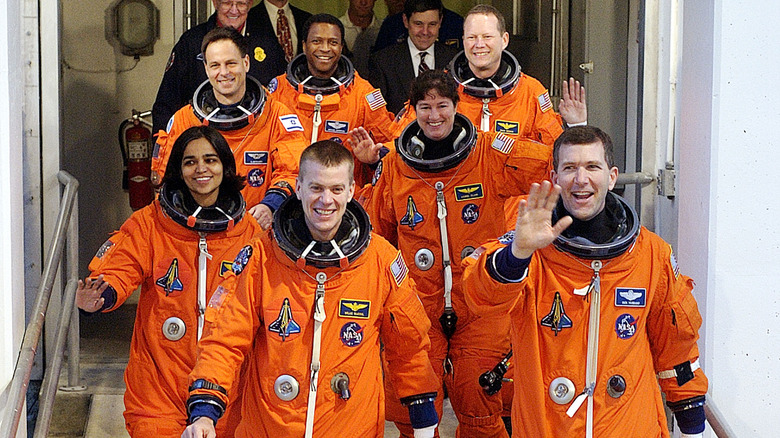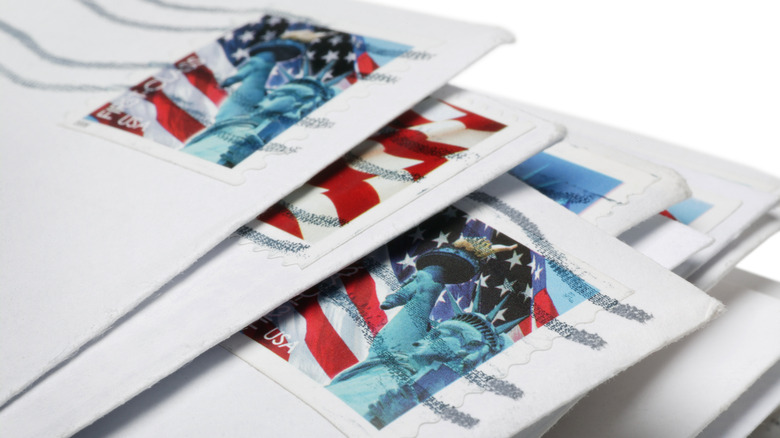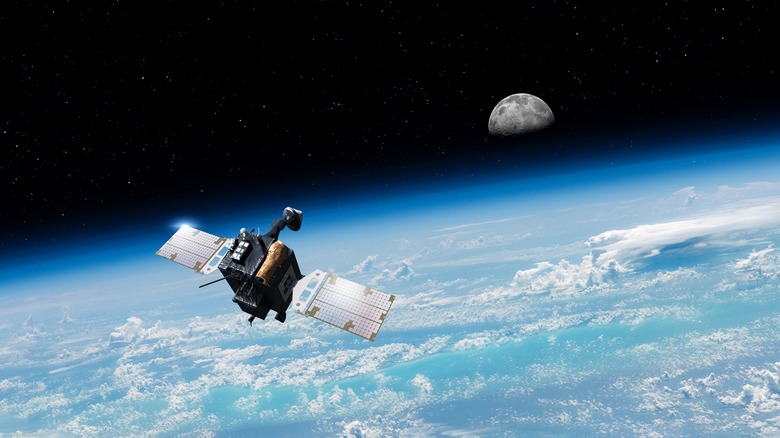The Biggest Scandals To Ever Hit NASA
At times, it really does seem like NASA presents an easy target for critics. We're not just talking about the ever-debated usefulness of manned space exploration in general, but the many, many scandals that have hit NASA over the decades. Granted, many of these scandals are more gossipy, soundbites than anything, and can be traced back to the decisions of individual astronauts and administrators rather than NASA on a whole. Other events have been far more catastrophic and scandalous, like the destruction of the Columbia shuttle in 2003, the Challenger in 1986, and Apollo 1 in 1967, all of which resulted in the loss of lives and the eventual 2011 closure of NASA's shuttle program.
Recent years have seen tabloid-esque stories spin out from NASA's orbit, like 2007's love triangle tale featuring astronaut Lisa Nowak. Then there are confirmed reports of NASA allowing astronauts to fly drunk on at least two occasions, and an incident involving a NASA subcontractor cutting the wires on a computer that transmitted data between Earth and space. More recently, NASA subcontractor SPI (Hydro Extrusion Portland) was found guilty of supplying the space agency with defective aluminum. And in 2020, NASA administrator Douglas Loverro stepped down days ahead of a launch because of an unspecified, personal "mistake."
More pertinently, however, we've got the aforementioned Apollo 1, Challenger, and Columbia space disasters, all of which occurred because of preventable mechanical and managerial errors. On top of these we've got a lost probe and, strangely, a set of letters sent to space.
The Apollo 1 disaster set a scandalous precedent
To be clear, the loss of astronaut lives is far worse than a "scandal," especially to the loved ones of deceased crew members. But to the wider world, government, and scientific community, disastrous incidents discredit NASA and ruin its reputation. And all such scandals started before humans even set foot on the moon.
In 1967 the three members of the Apollo 204 mission — colloquially called "Apollo 1" because it was supposed to be the first manned Apollo mission in space — died on their launch platform before they could even reach the skies. Virgil "Gus" Grissom, Edward H. White, and Roger B. Chaffee were running a liftoff simulation when an abrased wire caught fire in their oxygen-filled command module. The men tried to open their sealed doors and howled for help as temperatures rose, but died before they could be rescued. They didn't die from flames, though. Their bodies showed they were asphyxiated because the fire consumed their oxygen.
NASA's official investigation at the time concluded that "technical and management lapses" caused the blaze — doubtlessly the most infuriating thing a loved one could hear. Following the incident NASA tried to make good. They opened two separate safety committees to oversee future operations, changed all shuttles to a more advanced version of the craft that attached to an escape tunnel, reduced the amount of flammable material on board, and so forth. But despite NASA's adept public relations handling of the incident, trust in the organization had already been shaken.
The Challenger catastrophe aired on live TV
Thankfully, it took almost a couple of decades for the next major scandal to hit NASA. That kind of clean track record illustrates an important point: NASA has had many more successes than failures, overall. But, folks remember the failures much more vividly. And if the cost of failure is human lives, then even the greatest successes seem dim in comparison.
Folks alive in the 1980s — including children watching an exciting moment on live TV in school — will undoubtedly remember the Challenger disaster. Reagan-era space flight optimism came crashing down in 1986 when the seven-crew Challenger space shuttle tore apart during liftoff and fell in pieces to the Atlantic Ocean. All seven crew members – Francis R. "Dick" Scobee, Michael J. Smith, Judith A. Resnik, Ronald E. McNair, Ellison S. Onizuka, Gregory B. Jarvis, and Christa McAuliffe — died. Like before, technical issues and poor managerial oversight were to blame, as a faulty O-ring overheated during launch and caused a hydrogen leak in Challenger's right engine. The same craft, it should be noted, endured numerous overhauls and fixes in the years leading up to the 1986 launch.
Like the Apollo 1 before it, the Challenger disaster resulted in the usual slew of reports, apologies, memorials, and upgrades to equipment and procedures. President Reagan himself established a commission to investigate the whole thing, which generated the 450-page Roger's Commission Report. Thirty-two months later NASA was back in business.
The Columbia disaster was completely preventable
So we come to the third of NASA's three major shuttle disasters and scandals: the Columbia in 2003. Unlike the Apollo 1 and Challenger crafts, the Columbia made it to space successfully and completed its 16-day mission without any problems whatsoever. On the return back to Earth, though, and a mere 16 minutes before they would have landed, the seven-person crew ran into trouble. None of the astronauts on the Columbia made it home alive.
NASA explains that a bit of foam tore off from the shuttle about 82 seconds into liftoff. It struck the left wing, and mission control basically told the crew that it was nothing to worry about because it had happened during other missions. Granted, it's not exactly as easy to turn a space shuttle around as it is a bicycle, but it's reasonable to conclude that something could have been done to fix the shuttle once in orbit. Instead, the damaged wing broke off during reentry and the shuttle tore itself apart and scattered across Texas and Louisiana in pieces.
This time it was NASA who commissioned a 400-page report into the incident, down to a detailed description of all the factors that led to the crew members' deaths. The report, which took five years to release, contained recommended changes to managerial procedures, suggested improvements to equipment, and so forth. This time, though, NASA wasn't coming back from the scandal. Three years later in 2011, they axed their shuttle program, permanently.
Letters smuggled into space
While there are a lot of scandals to select from at this point — like, a lot, lot — one scandal stands out simply because it's so bizarre. In fact, it might not even seem like a big deal at first. But, it led to a congressional inquiry, a NASA investigation that pit the institution against its own astronauts, and ... a collection of astronaut-signed postal covers smuggled into space intended to be sold later for a profit? Yes, for real.
As Catawiki relates, this particular scandal dates back to the dawn of something most have probably never heard of: astrophilately, i.e., collecting space-themed stamps often centered on a key astronaut, shuttle, mission, etc. Starting in 1948 at the onset of the Cold War, space-themed stamps served to foster nationalism at a time unconcerned with things like TikTok. And if signed by actual astronauts and sold on the sly, such memorabilia could definitely prove hot and pricey commodities.
Come 1971, businessman Horst Eiermann conspired with German stamp seller Hermann Seiger to use the Apollo 15 mission to generate some cash. Astronauts James Irwin, David Scott, and Alfred Worden took a bribe of $7,000 each (nearly $54,000 when adjusted for inflation) to ferret 400 total postal covers on board their craft and sign them. Some of them were NASA-authorized, and some weren't. When the crew touched back down they were eventually discovered, faced the aforementioned investigations, and were never allowed to fly again. Apollo 15 supervisor Donald "Deke" Slayton called it a "regular godd*** scandal" (via Catawiki).
Imperial units lost a probe
Our last scandal is far less serious than the catastrophic destruction of a space shuttle, but stands out because it's so absolutely, unbelievably stupid. It therefore demonstrates exactly how easy it is even for the brightest minds on Earth to error out, and perhaps why so many other scandals have struck NASA over the years — especially as an organization with so much complexity and so many moving parts.
Case in point: the lost probe of 1999. As the Los Angeles Times says, NASA's Mars Climate Orbiter simply vanished from space that year. Worth $125 million (about $234 million today), it wasn't the priciest of NASA's gadgets or missions, but it wasn't ultra-cheap, either. This lost probe wasn't an isolated incident, but happened at the end of a string of failures that burned through billions of dollars and served as a humiliating capstone for the trends of the time.
So what happened to the Mars probe, exactly? It used the wrong measurement units. NASA's Jet Propulsion Laboratory used metric units, but the probe's manufacturer — Lockheed Martin Astronautics — programmed it in imperial units, i.e., the dumb, weird units used only by the United States, Myanmar, and Liberia. This caused the probe's data transmission to fail and the probe itself to be lost. To this, the director of George Washington University's Space Policy Institute John Logsdon rightly declared, "That is so dumb," according to the LA Times. He also called out a trend of "insufficient attention to detail" amongst the "space community" of the time.
